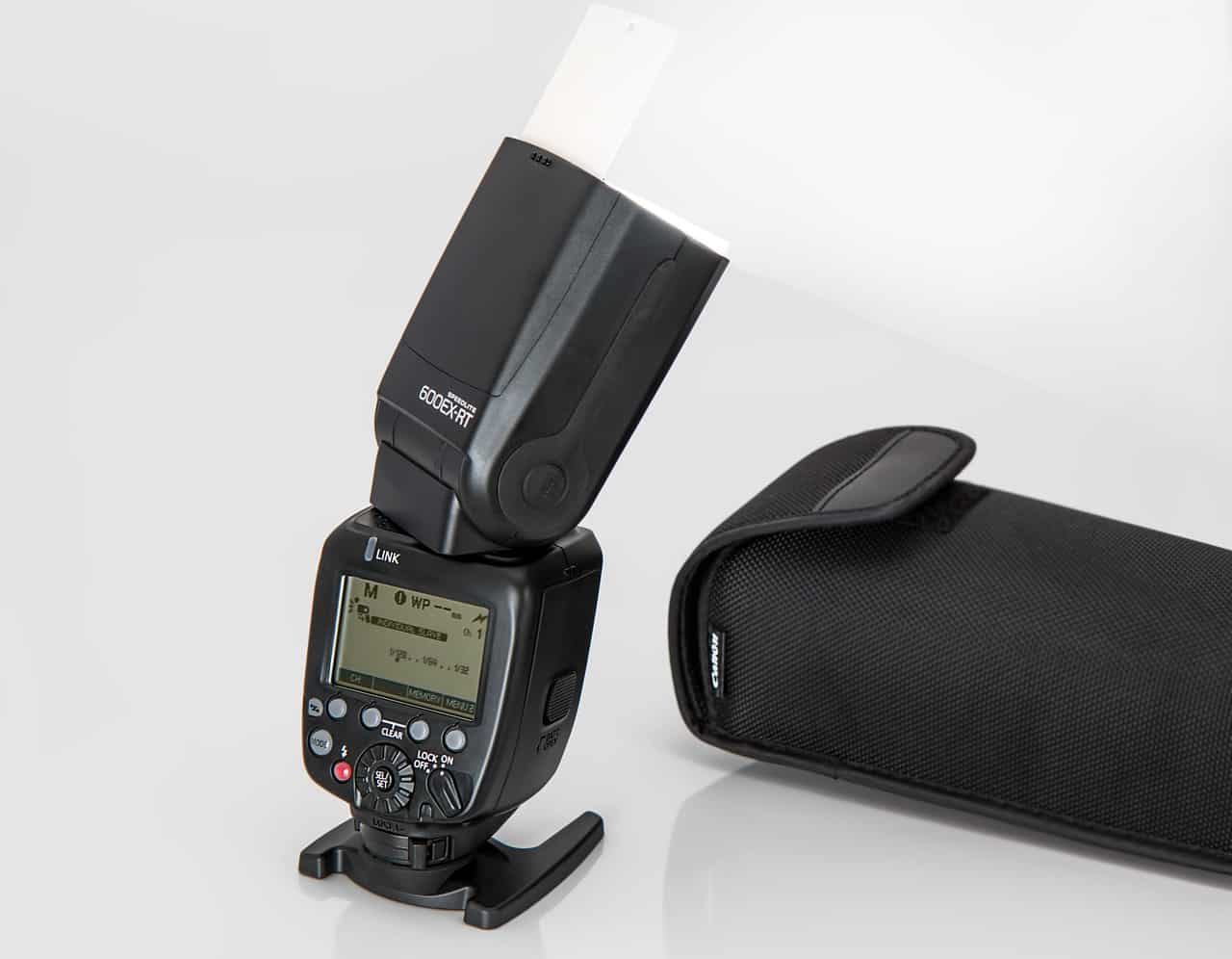A camera’s speedlight flash refers to the mounted portable flashes that can be attached to most modern DSLR cameras. Speedlight is a term that was coined by Nikon in the 1960s to describe Nikon flashes that were not built into their cameras.
However, Canon molded the term into “Speedlite,” which is essentially the same concept, with the only ostensible difference being its spelling.
Speedlight flashes all have the same purpose, to provide an intense light source for the subject you are photographing. As camera companies have innovated, these speedlight flashes have increased in purpose and functionality, now able to function in a variety of ways.
Here is a list of the included features and functionality of modern-day speedlight flashes and a brief description of each feature included in the list.
Table of Contents
Functions of Speedlight Flashes
- TTL Metering: E-TTL and I-TTL are typical forms of TTL metering that can be found on cameras with a speedlight flash. This setting automates the flash process by allowing the camera to take an ambient meter reading and the speedlight to take a low power pre-flash. The camera uses both readings to determine the optimal flash power and timing for your image.
- Stroboscopic Flash/Multi-Mode: Some of the more upscale DSLR cameras feature a stroboscopic flash or “Multi-Mode.” This feature allows the speedlight flash to fire multiple bursts during long exposure to create a strobe-like effect.
- Manual Mode: Manual mode is essentially the opposition to TTL metering modes. Camera users can move their speedlight flash marginally between stops using the speedlight flash’s control panel. These stops start at 1/1, which is full power, and continue to ½, ¼, 1/8, 1/16, 1/32, 1/64, and even 1/128 on more upscale cameras.
- High-Speed Sync: This is a feature that is generally reserved for more upscale Nikon and Canon speedlight flashes. Referred to as High-Speed Sync (HSS) on Canon cameras and Auto Focal Plane (Auto FP) on Nikon cameras, this feature allows users to briefly use their speedlight flash as a continuous light source, which can be synced at up to 1/8000sec.
- Menu Commanding of Flash: Although most speedlight flashes offer commands and customization within the speedlight, you can also command the speedlight flash via the camera’s menu. This is where you can adjust many of the settings listed above, such as E-TTL, I-TTL, and stroboscopic flash.
- Flash Exposure Compensation: Flash exposure compensation is a feature that allows photographers to compensate for the exposure solely within the output power of the speedlight flash. This feature helps photographers reduce the dynamic range of a photo by brightening dark areas while maintaining homeostasis in other areas.
- Match Zoom to Lens Focal Length: This feature differs in name depending on the camera. Canon cameras refer to this feature as “Zoom.” It allows the speedlight flash to automatically detect changes in the camera lens’s focal length. This allows the camera to cover longer distances, save power, and can even be the source for abstract effects.
- Speedlight Head Rotation: Finally, some speedlight flashes possess the ability to rotate and tilt at varying angles. Most speedlight flashes can tilt between 0 and 90 degrees and can also rotate 360 degrees horizontally. This allows you to bounce the light of the flash off of different surfaces, softening the light source of the image.
Using a Speedflash with a Different Camera Brand
If you are a hobbyist or professional photographer specializing in flash photography, you have undoubtedly found an excellent speedlight flash to serve as the primary light source for your images. If not, keep experimenting. With how important lighting is, you’ll find one soon enough. If the speedlight flash you prefer is Canon’s, but you are thinking about switching to Nikon cameras, you may be wondering if you could carry over Canon’s speedlight flash.
The simple answer is yes. You can use a Canon speedlight flash on a Nikon camera, which will still perform its base function. The more complex answer is that although a Canon speedlight flash will still trigger the flash on a Nikon camera, you will lose additional functionality that comes with the speedlight flash, such as TTL metering, high-speed sync, and more.
Is it similar to the other way around? What about using a Nikon speedlight on a Canon camera? It’s similar. You will not be able to use all features but you can shoot in manual mode.
Conclusion
If you are just a hobbyist photographer, the automated features that a Canon speedlight offers its users can be extremely helpful. For professional photographers, additional features such as head rotation and “Zoom” can be essential to the creative process.
Thus, it would help if you interchanged speedlight and camera brands unless necessary and the stakes are low.
And while you are on the subject of speedlights, be sure to read up on how to use a speedlight with a softbox.

